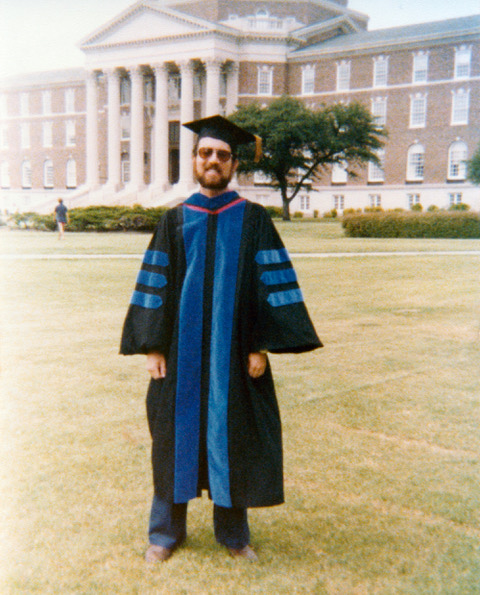
We are very sad to have to report that Richard Haberman passed away on December 31, 2018.
Richard (Rich) was born in Brooklyn, NY, in 1945, and grew up on Long Island. He received his BS (1967) and PhD (1971) at MIT. After a postdoc at UC San Diego and stints at Rutgers and The Ohio State, Rich spent the bulk of his career at Southern Methodist University (SMU).

During his time as a graduate student, he met Mark Ablowitz, both of whom had the same advisor David Benney. Rich and Mark established a strong friendship that lasted until Rich’s passing. They also co-authored papers which mark the start of Rich’s contributions to nonlinear waves. In line with the times they worked on ways to generate isospectral flows which are equivalent to systems of nonlinear partial differential equations, including extensions to two and three dimensions, where as we know there are fewer known integrable models. The role of linear and nonlinear resonances leading to “universal” evolution equations is best seen in their 1975 Journal of Mathematical Physics paper “Resonantly coupled nonlinear evolution equations”. It is perhaps this aspect that points to the ease in which Rich’s work blends nonlinear waves and dynamical systems in a natural way. According to Mark Ablowitz, “We have lost a remarkable person. Rich was an outstanding mathematician/educator who, in my opinion, was underappreciated. Apart from other important research … his doctoral thesis on stability of fluids and subsequent work was very significant and clarified much of what had been done earlier.”
Rich’s dissertation concerned the stability of parallel flows in the presence of a critical layer, clarifying the relative importance of dissipation and nonlinearity, which is still characterized by the so-called Haberman number. Triantaphyllos Akylas, MIT professor and fellow Benney student has called this “a beautiful and highly influential piece of work.” The main tool of this work is matched asymptotic expansions, a method that featured prominently in his later work on dynamical systems, carried out largely with his students at SMU. This includes important contributions in fast-slow Hamiltonian systems and capture into resonance.
One of us (Roy Goodman) was fortunate to begin a collaboration with Rich at a critical point in his career. “I had worked on the two-bounce resonance problem of chaotic scattering in solitary waves as a postdoc, but didn’t feel we had cracked it. After I had worked on it by myself after my postdoc ended with little progress, someone remarked that it reminded him of Rich’s work on separatrix crossing problems. I was already planning a trip to Dallas for a wedding, so emailed Rich out of the blue and asked if I could show it to him. He invited me to give a talk at SMU so we could discuss it. This began a five-year collaboration and a lasting friendship.”
An unapologetic champion of applied mathematics, he helped shape the Department of Mathematics to put emphasis in this direction. Throughout his almost 40 years as SMU, he mentored many young faculty, undergraduates, and graduate students. One of us (Peter Miller) was lucky to have been a beneficiary of this mentorship of undergraduates at SMU in the 1980’s, and feels especially indebted to Rich for his training in applied mathematics and nonlinear waves in particular and his suggestion and support to continue study in graduate school. “In going through my files I recently uncovered the following concrete example of his encouragement: on one exam paper from this period, Rich added a handwritten sticky note to indicate that as an undergrad my exam score was in the same range as those of the math grad students taking the same course.” As for Rich’s mentorship of faculty, at the 2007 ICIAM meeting, he recruited one of us (Alejandro Aceves) to join SMU.
Rich’s passion to teach the discipline with an applied flavor is best reflected in his books, most notably his book Elementary Applied Partial Differential Equations which has a world-wide audience and has been translated in many languages. This book is famous for its no-nonsense approach to a difficult subject and its clarity of presentation. Rich served for many years as Editor-in-Chief for the SIAM book series Mathematical Modeling and Computation. His last unfinished project with one of us (Alejandro Aceves) was to write a textbook in nonlinear dynamics based on many iterations of notes he had produced through the years.
Rich is survived by his wife of 50 years Liz Haberman, his children Ken and Vicki, and his granddaughters Leila, Gwyneth and Chloe. He was dedicated to his family and the profession. He was a friend, scientist, mentor and educator who will be sorely missed. The SMU Department of Mathematics is planning the creation of a scholarship in his name and more information about it will be posted on the Department website.
Photos by courtesy of Liz Haberman.